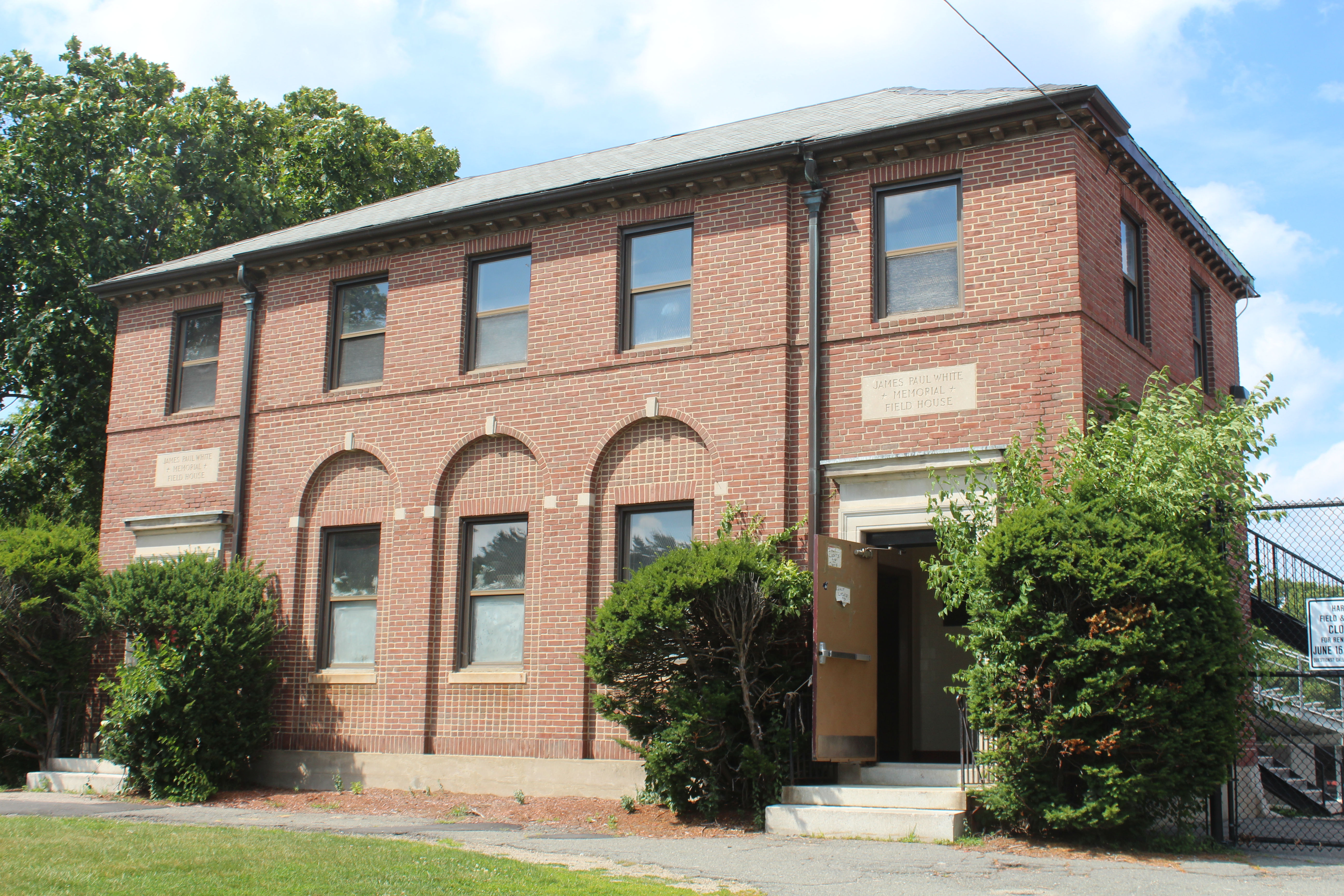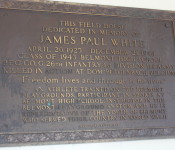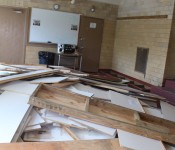Nineteen-year-old Army Private James Paul White – known by his friends as “Whitey” – had seen his share of war in just the month he spent on the front lines in 1944.
White – a member of Co. G, 26th Infantry Regiment, 1st Infantry Division, “The Big Red One,” – had fought as part of the US Army’s advance into the Huertgen Forest, “a miserable and treacherous affair” that lasted until the first week of December, recalled White’s unit commander, 1st Lt. August T. ‘Mac’ McColgan, in 2004.
It must have been a hard time for the replacement to a battle-hardened company
“All of the battles in the past were just rehearsals for what was yet to come” on Dec. 16, said McColgan, when some 24 German divisions, 10 of them armored, launched a massive counterattack in the Ardennes region of Belgium that began what was to be called the Battle of the Bulge. The 26th, known as the “Blue Spaders,” would fight on the northern edge of the enemy’s advance, near the small Belgium hamlet of Don Bütgenbach.
“The Battalion Commander finished his attack order with the statement, ‘Gentlemen we fight and die here.’ Many did die there, friend and foe alike,” wrote McColgan in 2000.
“We established our defensive position astride the Bütgenbach/Büllingen Road. We, G Co., 26th Infantry established the “Hot Corner,” said McColgan in his war memoir, “The Battle of the Bulge – Part III – Hell at Bütgenbach.”
On Dec. 20, White – who was a veteran member of the outstanding 1942 baseball team of Belmont High School where he graduated in 1943 – would face with his fellow soldiers the might of the German Wehrmacht. Enemy tanks launched an attack on their position on “a dark, damp and foreboding morning,” many which succeeding in penetrating parts of the US line. Only through close-range combat was the attack propelled back.
Following a night and early morning which White and his comrades were subjected to an artillery barrage that was “by far the worse the defenders of Dom Bütgenbach had experience in the whole war,” a final all-out push with an ever greater armored force began at dawn on a foggy Thursday, Dec. 21.
Once again, the 26th successfully beat back the enemy’s attack in which infantry drove back the Germans. For his actions during that battle, the 26th’s Cpl. Henry Warner would be awarded the Medal of Honor posthumous.
And in the snow and bitter cold of a field in Belgium on the day before winter, White laid dead, one of 19,000 Americans killed in the 10-day battle.
In May 1948, a year after White’s body was sent from Europe for burial in the US, Belmont honored White by naming the athletic field house on Concord Avenue for him.
A bronze plaque reads that White was “[a]n athlete trained on the Belmont playgrounds” who was “representative of the youth of Belmont who served their country in World War II.”
“Freedom lives and through it he lives.”
The memorial, which hangs just inside the front door of the 82-year-old structure, is more than simply an aging tablet to the long dead. It became one of the reasons inspiring Woodfall Road resident Frederick Jones to move towards “refurbishing” the interior of Belmont High School’s athletic facility used by numerous teams which play on Harris Field or the Viglirolo Skating Rink during the school year.
“The plaque is quite moving,” Jones told the Belmontonian before attending the Belmont School Committee’s meeting on Tuesday, June 24. “It’s well worth reading by every resident.”
Jones said the structure is a state-recognized historic building – that is owned by the School District – that “we all drive by every day on Concord Avenue which also has an interesting architectural history.”
“But it’s also a historic memorial for a town figure. It makes you feel that there should be something better to continue this memorial to this hero and to all veterans,” said Jones, whose son plays football and was a finalist in the 200 meter dash in the All-State meet earlier this month.
Yet for anyone who has entered the field house can observe, the interior – which has four locker rooms – hasn’t changed much since the day it was renamed more than 65 years ago. The lockers are circa 1940s, “old, battered and far too small and narrow for modern equipment,” said Jones, forcing hockey and football players to leave large bags and personal items on the floor or on top of the lockers. The paint is old, the emergency lights don’t work and the communal showers harken back to the YMCAs of a bygone age.
“It is quite remarkable the conditions inside the field house,” Jones lamented.
“We know how hard the athletes work … and it seems right to give them a better facility,” said Jones.
Yet years of delayed maintenance has taken its toll on the structure as capital spending is limited and greater priorities for the Capital Budget Committee arise on an annual basis.
Knowing the challenges facing any facility needing long-term funding in Belmont, “our idea was to step in and do some simple things that will refresh it,” said Jones.
The result of many brainstorming sessions by Jones and a core committee he set up resulted in raising nearly $40,000 in outside pledges of the $50,000 they are seeking to raise along with contacting contractors who can do the job.
The project is divided into several “discrete modules” that were ranked in order of importance with the lockers being the most pressing need. Next will be replacing the electrical system and updating the lighting fixtures and emergency lighting system, performing a top-to-bottom cleaning, repaint the inside and then place partitions in the showers for privacy.
And work is currently underway inside the field house with material begin stacked up in the ground floor entry way.
Jones and his group will be working with the town’s Facilities Manager, Gerry Boyle, and the school’s Athletic Director James Davis as well as the Brendan Grant Foundation which will allow anyone donating to the effort to receive a tax deduction for their contribution.
“The support we have receive has been very encouraging and has helped our fundraising,” said Jones.
Yet what this one group of parents and supporters has done is expose the inability of the town to sufficiently fund what is required from either the school or capital budgets, said the School Committee’s Kevin Cunningham.
“I’m not sure what the moral of that is except that an additional amount of effort is not coming from the core fund but from volunteers and donations,” said Cunningham.













Leave a Review or Comment